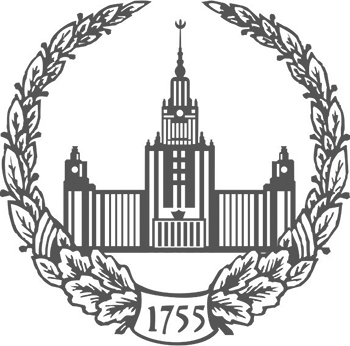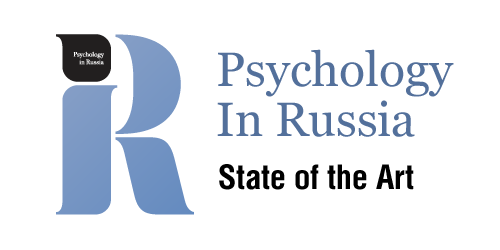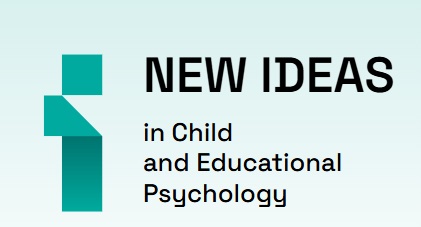Literary Texts and Psychological Contexts
-
-
Background. The relevance of the subject is expressed in the analysis of the phenomenon of counter-emotion from the perspective of plot (actor's action) and storyline (its psychology) "short circuit". The biblical scene "Kiss of Judas", known for the moral transformation of one of the apostles, was selected to represent this phenomenon.
Objective. To detect Judas' counter-emotion in his be(haviour)trayal as depicted in European painting and sculpture.
Study Materials. For this study, European artifacts dating back to the period from late 13th to 16th centuries were selected, a time when the discussed subject was developing and reaching its classical stage. Additionally, works of the second half of the 19th century and throughout the 20th century were analyzed, where the fact of Judas' betrayal acquired a renewed tragic dimension.
Methods. In analyzing the Judas' personality, the method of Lev S. Vygotsky was applied, which the author initially defined as an aesthetic and psychological approach. However, it was later concluded that the most concise and comprehensive term would be the method of plot and storyline "short circuit". By problematizing the antagonist's connection to his actions, the author formulated a hypothesis regarding the differentiation of possible aspects of his emotional experience.
Results. Based on the analysis of visual archetypes established within the New Testament biblical topos "Kiss of Judas", the principles specific to its psychological component were identified: 1) accusatory and caricatural— "the cowardly turncoat"; 2) accusatory and tragic — the traitor-provoker; 3) accusatory and grotesque — the traitor characterized by greed or sadism.
Conclusions. The analysis of Judas' image in painting provides grounds to discuss a stable paradigm of understanding evil, which, in interaction with good, becomes a moral criterion in the individualization of author concepts as modeling one's own vision of the world. In the Judas' kissing, evil serves as a unique psychological index anticipating the growing tragedy of society.
Keywords: Jesus Christ; Kiss of Judas; psychology of art; Lev S. Vygotsky; plot and storyline “short circuit”; counter-emotion; experience of catastrophe; betrayal; European painting and sculpture DOI: 10.11621/LPJ-25-26
-
-
-
Background. The article discusses the current socio-psychological problems of our time: some parallels in the images of love; the confrontation between the city, with its all-consuming civilization, and nature, reviving man; the theme of the creation (transformation) of a new world, initiated by a beloved beautiful woman; the values that save a modern man in a falling world) in the novels of Meir Shalev "Fontanella" and Anna Gavalda "Consolation Game of Petanque".
Objective. The goal is to identify the features of the life world concepts and of the mutual understanding in art. The author wonders why many readers do not understand Shalev and Gavalda. In order to understand this, an analysis of communication in art, presented in the "artistic communication scheme", is proposed.
Methods. To solve the problems posed, a comparative analysis, reconstruction of the positions and life world of the novels' characters, comprehension of situations and problems, as well as their solutions, are carried out.
Results. A scheme of artistic communication is outlined, containing four projections (plans): semiotic, artistic reality, socio-psychological and spiritual (speech), which are considered sequentially. Depending on the type of the work being studied, as well as the specifics of the research task, certain projections come to the fore, and the others are manifested in the structure of the content of these works. The interest of writers in the unusual love under consideration is discussed, as well as the reasons for the negative assessment of the analysed works.
Conclusions. The author suggests that in modern culture there is a search for a new concept of love that would, on the one hand, meet the realities and challenges of modernity, and on the other, overcome the shortcomings of romantic love and the ordinariness of family life. One of the scenarios (naturally for a certain audience) is a boy's love for an adult woman, which lasts throughout his life. The difficulties in understanding many works of art and their characters are connected with the experiments of writers who are in search of a new artistic form.
Keywords: art; understanding; creativity; reconstruction; love; culture DOI: 10.11621/LPJ-25-27
-
-
-
Background. The inner work of the personality, which makes a decisive contribution to personality development and can lead to equally significant results in overcoming personality crises, as well as psychotherapy, remains practically unrevealed. In particular, the role of works of art in the facilitation of the inner work remains unstudied.
Objective. The goal is to identify the conditions under which a literary text becomes or does not become a facilitator of the inner work of the personality, as well as to describe the process of facilitation in a dramatic improvisation group.
Study Participants. Sixth-year psychology students who participated in a dramatic improvisation group (N = 11) or independently read an excerpt from J. Cabret's novel "I Confess" (N = 6) were involved in the study.
Methods. The method of dramatic improvisation based on works of art, the analysis of reflexive responses of participants in a dramatic improvisation group, the analysis of a literary text, as well as the theoretical analysis of scientific literature were applied.
Results. The literary text we chose turned out to be emotionally "difficult" for psychology students and did not become a facilitator of the personality inner work for the study participants who simply read it. However, this same text turned out to be a facilitator of the personality inner work for all the study participants who worked with it in the format of a dramatic improvisation group. At the same time, the path of inner work when encountering the text in the format of such a group includes five stages: at the first stage, resistance is overcome before the immersion into the "difficult" text, at the second stage, the readers live through their experiences with the characters of the work, at the third stage, universal meanings, experiences and questions are revealed in the work, at the fourth stage, improvisation occurs, allowing one to feel one's own position in the value-semantic world of the work, at the fifth stage, a person begins to "read" the personal experience with the help of the work.
Conclusions. The notion of the inner work of the personality in the concept of A.N. Leontiev is comparable with a number of concepts used in modern psychotherapy and philosophical practice. A literary text can act as a facilitator of the personality inner work if the readers manage to see universal meanings and problems behind the story of specific characters and "read" their own experience through this prism. In the case of emotionally "difficult" texts, the practice of dramatic improvisation based on literary works can help pave the way from the text to the inner world of the reader.
Keywords: inner work of personality; literary text; dramatic improvisation; psychology of art; perception of fiction DOI: 10.11621/LPJ-25-29
-
-
-
Background. The archetypal approach in literary studies contributes to understanding the symbolic structure of literary texts. The study of archetypes in European and American literature of the early 20th century allows us to study the connection between the individual and collective unconscious.
Objective. The goal of this research is to consider the features of the construction of the conflict in the plot of Booth Tarkington's novel "Gentle Julia" in light of the concept of archetypes by C.G. Jung.
Methods. The study analyzes the activities of the characters in the fictional text from the standpoint of analytical psychology and the concept of archetypes by C.G. Jung.
Results. Archetypal analysis of literary characters allows us to identify the origin and reasons for the formation of universal behavioral patterns in accordance with the family environment, personal experience, the uniqueness of the cultural context, the education system, and biological factors. The materials of the article can be used in preparing lecture courses on the "History of World Literature" and "Psychology of Artistic Creativity".
Conclusions. The application of the theory of archetypes developed by C.G. Jung and his followers to the study of texts created in the era of modernism opens up new perspectives for understanding the deep meanings and cultural context of the era. Archetypes are not static; they are subject to transformation under the influence of a particular culture and idiostyle.
Keywords: theory of archetypes; C.G. Jung; Jungian psychology; psychologism; American literature; social role; self-identification; artistic world; emotions; psychology of artistic creativity DOI: 10.11621/LPJ-25-28
-
-
-
Background. The image of a "small", "minor" actor is of little interest to the audience and culture. This article focuses on an actor who remains in the shadow of genius, who does not bear the image of greatness, who is helpless and doomed. This actor plays roles that are far from characteristic, expressive and the sacred awe of the crowd. However, this is a person with ambitions, demands, which first turn into vain hopes, then into crisis decisions, revealing the horror of the stage existence.
Objective. The study aims to examine the self-perception of the "small" actor within the context of the role of emotions in cognitive processes and creativity, as they are intertwined with the history of ideas and the empiricism of artistic existence.
Methods. The solution of the tasks set in the article required an integrated approach to the development of the research methodology. The comparative-historical method allowed us to identify the patterns of development and evolution of the phenomenon of interest to us; to trace the continuity of literary practices in the aspect of aesthetically and ideologically motivated ideas about the problem of the "small" actor. We also use the comparative-contrastive method in analyzing the specifics of the artistic presentation of everyday or historical phenomena.
Results. The study is connected with the expansion of ideas about theatrical art in one of its dramatic aspects, it becomes a kind of a warning for actors, debunks the established mythology of stage craft and demonstrates the physical and mental metamorphoses of an actor who has not achieved recognition. The materials of the article can be used in the preparation of lecture courses on "The History of Theater" and "Psychology of Artistic Creativity".
Conclusions. The literary plot of the "minor" actor clearly demonstrates that the real order of things — the stage biography of the literary image of the actor — destroys the formula of K.S. Stanislavsky, turning it into a model of the impossible. If we follow the concept of the great director, we find an accentuation on the rise of the actor from a microscopic role to a grandiose stage victory. The literary history of the "small" actor clearly demonstrates the utopian nature of the statement of the classic of the theater, his focus on myth-making. The preference for deviant behaviour by "small" actors becomes an act of protective ritual, an instrument of communication with a world that does not want to accept you.
Keywords: “small” actor; social role; professional role; theatrical art; existence; self-identification; artistic world; emotions; developmental psychology; psychology of artistic creativity DOI: 10.11621/LPJ-25-25
-









